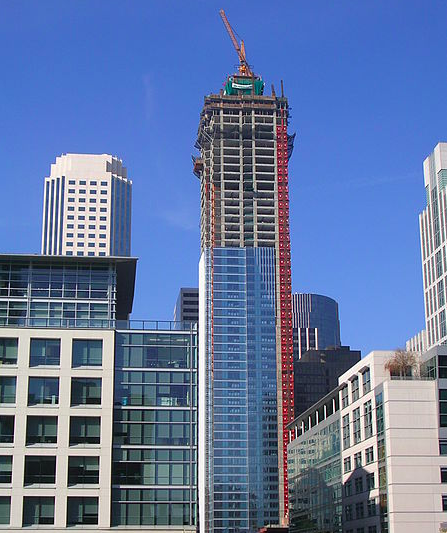The Great Leaning Tower of Soma is back in the news, as engineers for the developer have come up with yet another plan to fix the building after their first attempt just made things worse.
Although the building is in the district of Sup. Matt Haney, it’s been Sup. Aaron Peskin who has been pushing the issue of how this disaster happened and what the city ought to be doing to keep the building from leaning even more—or, in a catastrophic outcome, falling over in an earthquake.

The Government Audit and Oversight Committee will hold a hearing on the issue Thursday/6, asking the developer and the Department of Building Inspection to report.
The problem is both really complicated and relatively simple. Millennium Partners, which built the luxury condo tower, didn’t sink pilings for the foundation into bedrock, instead using a system of friction-pilings that are, as best as we can tell, stuck in what’s called Old Bay Mud. As one engineer put it at an earlier hearing, the idea is that if you drive a broomstick into sand, eventually it will stop moving.
Other buildings have also used that system, but they weren’t as heavy as this one.
Beyond that, the geotechnical analysis gets mind-boggling. You can read a whole lot of it here, if you want. Suffice to say that the structural engineer hired by Millennium, Ron Hamburger, and the city’s oversight team, say that all will be fine if they now drill just 18 new piles to bedrock, instead of the 52 they originally planned.
But Robert Pyke, who is a PhD licensed geotechnical engineer, says that the structural fix itself is dubious, and that, possibly, the political fix is in. Pyke has no financial stake in the matter.
In a series of letters to the supes, Pyke asks a bunch of questions that might be part of the hearing:
Why didn’t the design team conduct this research on installation techniques back in May when the indicator piles had already triggered enhanced settlement? Why did the Perimeter Pile Upgrade continue for so long until, as best as I understand it, the (city) Engineering Design Review Team pressured then to pause and also to bring in an expert on pile installation? Why doesn’t the design team still not have a clear explanation of the causes of the settlement and tilting?
Why was installation of the perimeter piles not paused by the end of June at the latest when it was already obvious that there was an enhanced rate of settlement?
Why had they not sampled the material at the bottom of the plugs in the casings to see whether it is sand or Old Bay Clay (OBC) that is entering into the bottom of the casings at an earlier point? Why does the design team continue to talk about compaction caused by vibration being a major contributor to the enhanced rate of settlement when that is not credible?
If the enhanced rate of settlement is due to an adverse hydraulic gradient causing sand to enter the casing (which at one point seemed to be the design team’s favored theory), why was that allowed to happen? This is Drilling 101. Doesn’t this all suggest that the design team does not know what they are doing and that their assurances relative to other issues involving future performance may be worthless?
It is things like this that cause Supervisor Peskin and others to suspect or believe that there is some kind of collusion between Ron and the (DBI) EDRT. You can deny that all you want, but that will not make the issue go away.
I spoke to Pyke tonight and he told me that there was a fundamental problem with the original plans to fix the building. The developers insisted then, as he does now, that the structure is in no danger, and is safe even with as much as four feet more tilt.
So why then do the $100 million fix the way they planned—and if that fix was such a good idea, why have they changed it?
The hearing starts at 10am.





